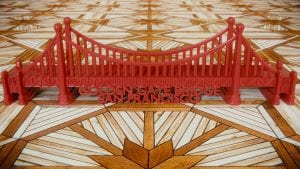 Why do you need high-quality consumables for your 3D printer?
Why do you need high-quality consumables for your 3D printer?
There are many factors that determine how well your 3D printer prints. Many of them relate to the settings and modifications of the device itself, but the quality of the plastic used for printing may be crucial. Meanwhile, often this is paid little attention, because the threads, as a rule, look quite normal. But under the external gloss can be hidden air pockets and various kinds of nodules, which are just waiting to spoil your creation.
Regardless of which particular type of plastic you use, the key to quality printing is proven quality threads. A simple search for queries about clogged nozzles or how to clean the extruder will give a lot of answers, which confirms that many people face this problem. In most cases, the reason for such a misfortune is the use of substandard Chinese materials purchased on Aliexpress. Not that any Chinese plastic is bad, no, but practice shows that you should not trust it.
Diameter
The problem of cheap filament is that it is usually manufactured with large tolerances and from materials of dubious origin. For 1.75 and 3 mm yarn, the diameter tolerance should not exceed ± 0.1 mm, and ideally 0.05. Anything else can lead to clogging of the extruder nozzle, because these nozzles are made to the exact size. In addition, from threads of irregular thickness, a “poured” or “undersized” object may turn out. The fact is that the programs for translating the 3D model into the control code for the 3D printer, calculate the extrusion rate based on the bar thickness data.
Quality of raw materials
Once again: cheap threads made of poor-quality, “dirty” material, can clog the extruder and affect the result of printing. When I say “dirty” stuff, I mean that it was obtained as a result of processing lots of third-party, “unclean” plastic and secondary raw materials. By “third-party” I understand the plastic obtained as a result of processed raw materials of ABS and PLA granules, in which there may be different fragments and pieces, as well as sand, metal sawdust, paper and wood shavings.
Air
Another problem with cheap plastic is the formation of air bubbles in it. These small bubbles of moist air, reaching the nozzle of the 3D printer and heating up to the temperatures there, rapidly expand and loudly explode at the output. As a result, the model either floods, or in it, or on its surface, voids are formed. Cheap threads are literally stuffed with such bubbles, and anyone who has ever used such materials is familiar with these sometimes pretty loud shots.
Dyes
Finally, in cheap plastic may not be enough paint. Manufacturers, in order to save money, reduce the amount of pigment used. The result can be very different: the paint can simply be washed off, transparent layers can be printed, and even the final result can get unplanned decorations in the form of blots. Although this is not the most important, when buying plastic, you need to pay attention to the uniformity and richness of colors. With quality threads this should be all right.
In the online store rusabs.ru the most diverse selection of existing materials. Plastic ABS and PLA plastic with a diameter of 1.75 all colors of the rainbow, very saturated and vibrant colors. Most importantly, the yarns are made of exceptionally high-quality plastic.
Image Credit: Aenigmatis-3D
